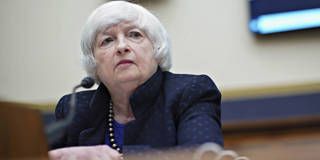Rather than issuing 50- or 100-year bonds when interest rates were at rock-bottom, the US Treasury dismissed this option and simply continued to borrow on a short-term basis. Now that US interest payments are ballooning, the scale of this blunder has become apparent, as have the implications for future generations.
SAN DIEGO – A controversial new book by psychologist Jonathan Haidt laments The Anxious Generation. The number of sleep-deprived high schoolers has climbed 13% in the United States, and young people do indeed have reasons to be jittery. While Haidt blames social media, members of Gen Z must also worry about the irresponsible debt levels that Baby Boomers and Generations X and Y (Millennials) are foisting onto their narrow shoulders.

SAN DIEGO – A controversial new book by psychologist Jonathan Haidt laments The Anxious Generation. The number of sleep-deprived high schoolers has climbed 13% in the United States, and young people do indeed have reasons to be jittery. While Haidt blames social media, members of Gen Z must also worry about the irresponsible debt levels that Baby Boomers and Generations X and Y (Millennials) are foisting onto their narrow shoulders.